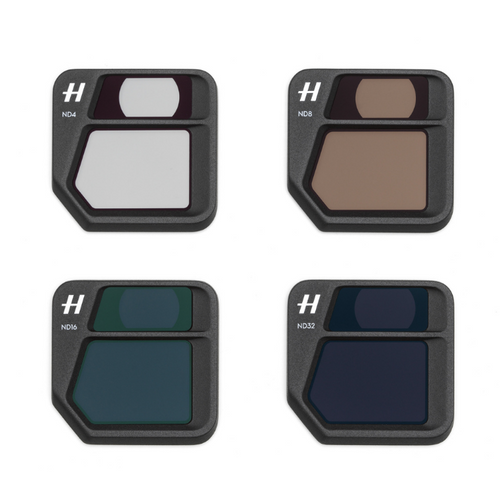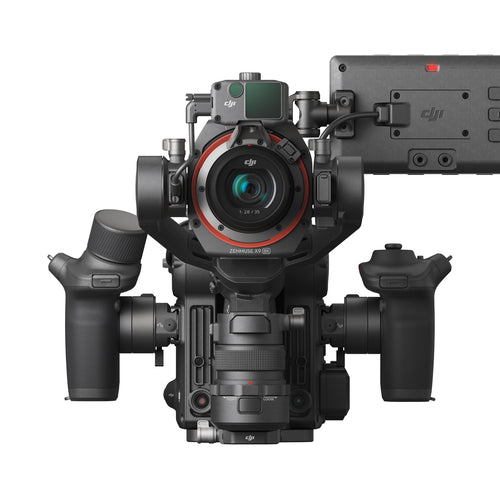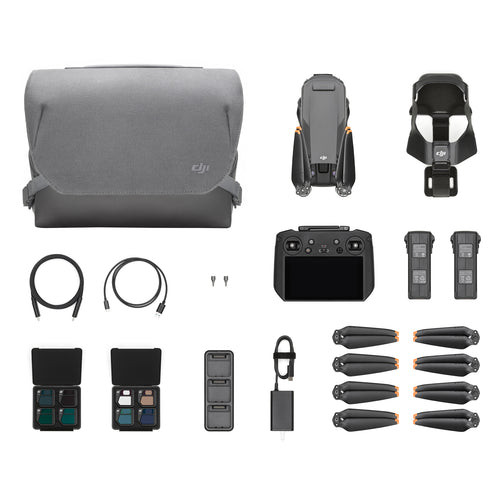
ND (Neutral Density) Filters should be a key accessory in the backpack of every content creator who uses a drone.
Easy to use and able to produce beautiful imagery, it is easy to understand why ND Filters are a popular addition to any aerial photographer or videographer’s kit.
Indeed, DJI drones are compatible with a range of ND Filters, including the new Mavic 3, which can be used with two sets of ND Filters. PolarPro is also set to release new filters for the Mavic 3 in December.
The true value of ND filters is also epitomised by the new DJI Ronin 4D, which comes with the powerful Zenmuse X9 camera with a built in 9-stop physical ND filter for shooting in different lighting conditions.
But what are ND Filters, how do they work and how do they make your aerial photography ping? Find out in our in-depth guide.
CHECK OUT OUR RANGE OF ND FILTERS
What Are ND Filters?
ND Filters are placed in front of the camera lens (or dropped into a filter slot).
They are used to reduce the amount of light which enters the camera, as the below picture demonstrates.

In many ways, think of them as a pair of sunglasses. While sunglasses limit the amount of light coming into your eyes, ND filters block the light coming into the lens.
Importantly, because ND stands for Neutral Density, ND filters block the light in a neutral way without changing the colour of the light being captured by the camera and lens.
As well as limiting the amount of light, ND filters are commonly used to highlight movement (i.e. taking shots of a waterfall) or to give busy images a softer more surrealist appearance.
ND Filters - Aperture And Shutter Speed
When bright sunlight is thrown into the equation, an ND filter allows photographers more leeway in selecting an aperture and shutter speed to prevent overexposure.
Aperture
ND filters can be used to support larger apertures in bright light without overexposing.
This enables sharper imagery and allows shallow depth of field and selective focus effects while under lighting conditions that exceed the shutter speed capabilities of the camera.
Shutter Speed
When you block light coming into your lens, you need to expose the camera to light for a longer period of time. In other words, you need to open the shutter for longer to allow for the correct amount of light to enter the camera.
This means you need to slow the shutter speed. This lower shutter speed will allow anything moving in the shot to become blurry. This is particularly important when you want to emphasise movement.
ND Filters In Action
With this in mind, let's take some real-life examples and demonstrate how they work in practice.
The below drone photo was captured without an ND filter, but using the lowest ISO and smallest aperture possible. In this case, reducing the shutter speed would risk overexposure. With these settings, the shot also feels fairly static.

The next shot has been taken with the addition of an ND16 filter. As the amount of light entering the lens has been reduced, the shutter speed can be lengthened to 1 second or longer. The result is a general smoothing of the waves and a general feel of movement.

The third image has been captured using an ND32 filter, and therefore further extending the shutter speed - making the blurred effect even stronger.

The above examples demonstrate the use of ND fiIters for waterscapes. But how about urban landscapes?
The below GIF shows a scene captured with a fast shutter speed. The objects within the shot are moving, but there's very little motion blur, giving a fairly unnatural look.

In contrast, the second GIF shows a shot captured with an ND filter and longer shutter speed. This provides more motion blur, which provides a more lively feel.

This shows the importance of ND filters for dynamic action shots. And, by giving content creators more lenience to adjust shutter speed, ND filters give more creative control over shots.
ND Filters - Their Numbers And What They Mean
ND filters come in different strengths and levels of darkness.
Many ND Filters operate on differing levels of F Stop reduction which correlates to the amount of light they let into the sensor.
So, the larger the F-Stop, the less light allowed into the sensor.
This combats excessive exposure and allows you to frame the perfect shot, even in challenging lighting conditions. Used correctly, this ensures your stills and footage are never exposed.
The table below shows the relationship between the ND Factor and the F-Stop.
| ND Factor | F-Stops |
| ND2 | 1 |
| ND4 | 2 |
| ND8 | 3 |
| ND16 | 4 |
| ND32 | 5 |
| ND64 | 6 |
| ND128 | 7 |
| ND256 | 8 |
| ND512 | 9 |
| ND1024 (ND1000) | 10 |
This means that for every stop of ND filter, you halve the amount of light entering the camera. When the light is halved, to maintain the same exposure, you need to double your shutter speed.
And so this process continues. Add another ND stop; double the shutter speed again - as the below table shows.
| Original Shutter Speed | ND Filter In Stops | New Shutter Speed |
| 1 second | 1 | 2 seconds |
| 1 second | 2 | 4 seconds |
| 1 second | 3 | 8 seconds |
| 1 second | 4 | 16 seconds |
| 1 second | 5 | 32 seconds |
| 1 second | 6 | 64 seconds |
| 1 second | 7 | 128 seconds |
| 1 second | 8 | 256 seconds |
| 1 second | 9 | 512 seconds |
| 1 second | 10 | 1024 seconds (17 mins) |
For capturing the type of footage most associated with drone cameras, the standard ND Filters you'll encounter from the main manufacturers are ND4, ND8 and ND16, although there are further options available to up the f-stops.

For instance, the Mavic 3 Cine Premium Combo comes with a set of ND4, 8, 16 and 32, as well as a set of ND64, 128, 256, and 512. For the record, both these ND filter sets are available with the standard Mavic 3. Read our blog to find out the difference between the Mavic 3 and Mavic 3 Cine.
Using An ND Filter On A DJI Drone
When using an ND filter, ensure that your drone's camera is set to manual via the specific DJI app you are using and that your desired specifications (i.e. ISO & Shutter Speed) have been applied. Setting the camera to manual ensures that it doesn't digitally correct the exposure level and, in doing so, reduce the capture quality.

Once this is done, you should see a scale at the bottom of the options panel which displays the image's exposure.
As you can see, in the above example it is reading +2.0 which indicates that using an ND filter (in this case, a 2 stop ND4) would help to level the image lighting.
From here, it's simply a case of choosing the correct filter and playing around with the aircraft's camera settings until you're happy with the image transmitted onto your device and ready to capture perfectly levelled footage.
The interface on DJI's products makes it easy to choose the right ND filter to minimise overexposure which is inextricably linked with shutter speed, frame rate and ISO.

This means that you can use these filters to gauge the correct camera settings and ensure optimum quality for every shoot regardless of the lighting conditions.
It is worth mentioning that they aren't foolproof solutions and you must take care not to use an ND with too many stops or you'll end up with underexposed, dingy footage which is as much of an issue as too much light entering the sensor.
Consider taking some time getting to grips with the manual settings on your drone's camera, with or without the ND (as high shutter speeds can benefit drone photography), and you will be rewarded with a superior end result.
Note: Always power down the aircraft before making any changes to the camera's lens to avoid damaging the gimbal.
Aerial Filming with an ND Filter
Using ND Filters when filming on your drone essentially manipulates the shutter speed allowing you to retain the optimum shutter angle and in turn affect motion blur.
If you're looking to get cinematic quality from your drone's camera it's worth maintaining a shutter angle of 180°. This means you'll be getting a shutter speed of around 1/50 of a second at 25fps.
This strikes a fine balance of footage quality, negating the common issues of jitter and overt blurring to provide truly impressive results.

If the angle is any larger (i.e. 360°), you'll notice that a strong blur effect carries over between frames making footage of moving subjects appear smudged in places and if it is smaller (i.e. 45°), your video will turn out jerky and stuttery with no blur to smooth the transition of frames often giving the appearance of images stitched together like a flipbook.
ND filters are popular with aerial filmmakers as they grant you greater control over these settings - allowing you to capture smooth, professional quality footage that makes the most of the unique perspectives offered by drones.
Best ND Filters For Drone Photography
If you're looking for ND filters for your drone, there's every chance you will come across PolarPro and PGYTECH.

Between them, DJI's content-creation drones are covered, and they provide reliable options for your photography and filmmaking needs.
Aside from PolarPro and PGYTECH, there are the DJI versions, such as the DJI Mavic 3 ND Filter Sets or the DJI Air 2S Filters Set.
ND/PL Lenses
When looking for ND filters for your drone, you might come across ND/PL filters.
ND/PL filters - or Neutral Density/Polarisation Filters - are a unique type of camera filter that combine two popular filter effects together into one single lens.

In addition to having the properties of a neutral density filter, a ND/PL filter, integrates the features of a circular polarising filter, which allows you to capture vividness and contrast in an image.
These polarising characteristics not only enhance the colours of your image, but also reduce glare and reflections within your photo or video.
As a result, ND/PL filters achieve smooth, flushed out photos or videos at slower shutter speeds with improved contrast and colour saturation.
ND/PL filters offer the best of both worlds, so it is an enticing accessory to have. But there are some drawbacks: For instance, ND/PL filters work best when shooting at a 90-degree angle to the sun. Because they only remove light that’s polarised in a specific direction, they tend not to work well with wide-angle lenses.
Drone ND Filters - A Summary
Drones are amazing content creation tools, and they keep getting better and better. The upgraded specs of the recently-released Mavic 3, compared to other camera drones before it, are testament to this.
ND filters are an essential tool for bolstering aerial content and should be considered a key part of a photographer's or filmmaker's kit bag.
Adding these filters to your drone camera can lead to remarkable results, helping to ensure your imagery is not overexposed and providing even more freedom to get truly creative with your shots.





Leave a comment